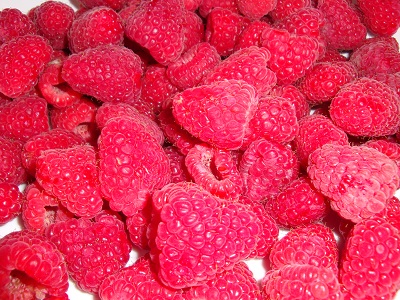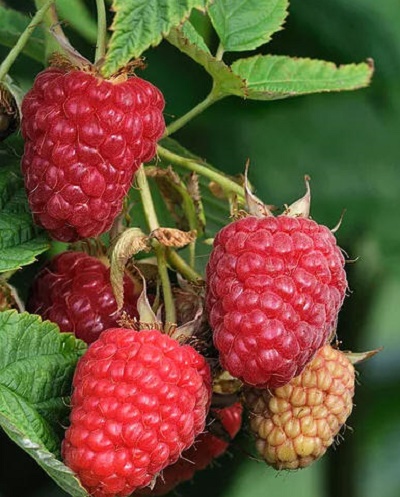
Raspberry U-Pick Orchards in Northeast Minnesota in 2024, by county
Below are the U-Pick orchards and farms for raspberries that we know of in this area.
Not all areas of a state have raspberries orchards that are open to the public. If you know of any others, please tell us using the add a farm form!
Remember to always check with the farm's own website or Facebook page before you go - or call or email them if they don't have a website or Facebook page. Conditions at the farms and crops can change literally overnight, so if you want to avoid a wasted trip out there - check with the farm directly before you go! If I cannot reach them, I DON'T GO!
PLEASE report closed farms, broken links and incorrect info using the "Report Corrections" form below.
St. Louis County
- Hoffbauer's - raspberries
3361 Lindahl Road, Proctor, MN . Phone: 218-624-4159. Click here for a map and directions. . Hoffmans has prepicked available at the Duluth Farmers Market in late July. Pick-your-own berries available by appointment. Call for price.
Raspberry
Raspberry Picking Tips, Recipes and Information
Raspberries can produce an early summer crop or a late summer and Fall crop. In
the U.S. Spring / Summer raspberries (called florocanes) typically peak during June in the South, and in July in
the North. The primocane varieties, which produce raspberries on shoots that
come up each Spring are typically read from August until frost.
In
the U.S. Spring / Summer raspberries (called florocanes) typically peak during June in the South, and in July in
the North. The primocane varieties, which produce raspberries on shoots that
come up each Spring are typically read from August until frost.
In addition to the variety a farm plants, the berries are ready at various times depending the local climate, such as which part of the state you are located. See this page for a list of raspberry festivals around the U.S.
And for those of you from the upper midwest through the west and up to Canada, if you are interested in Thimbleberries, see this page.
Before you leave to go to the farm:
- Always call before you go to the farm - And when they are in season, a large turnout can pick a field clean before noon, so CALL first!
- Leave early. On weekends, then fields may be picked clean by NOON!
-
Most growers furnish picking containers designed for raspberries, but they
may charge you for them; be sure to call before you go to see if you need to
bring
containers.
If you use your own containers, remember that heaping raspberries more than 5 inches deep will bruise the lower berries. Plastic dishpans, metal oven pans with 3 inch tall sides and large pots make good containers. I like the Glad storage containers like the one at right. - Bring something to drink and a few snacks; you'd be surprised how you can work up a thirst and appetite! And don't forget hats and sunscreen for the sun. Bugs usually aren't a problem, but some deet might be good to bring along if it has been rainy.
Tips on how to pick raspberries
-
Raspberry bushes don't have thorns, but they are a pick prickly, so if you
want to hold the stem while picking, a pair of lightweight gloves is
helpful.
- A ripe raspberry is deep color with a plump, soft but firm feel. It will pull free from the plant with only a slight tug. The center will remain on the plant. Keep in mind, raspberries come in many colors: red, yellow, black, purple, so you want to pick the darker shade of whichever it is.
- Pick only the berries that are fully ripe. Reach in between the stems to grab for hidden berries ready for harvest. Bend down and look up into the plant and you will find loads of berries that other people missed!
- I find it helps to hold the stem with one hand, while picking with the other.
- Repeat these operations using both hands until each holds 3 or 4 berries. Repeat the picking process with both hands.
- Don't overfill your containers or try to pack the berries down. Ideally, the collection containers should be wide so the pberries aren't more than a few deep.
- Pick berries into a shallow container. If they get piled too deep they will crush each other.
- Avoid placing the picked berries in the sunlight any longer than necessary. It is better to put them in the shade of a tree or shed than in the car trunk or on the car seat. Cool them as soon as possible after picking.
When you get home
-
DON'T wash the berries until you are ready to use them or freeze them. Washing makes them more prone to spoiling.
- DO refrigerate! Right after picking, place raspberries in the fridge. If your fridge tends to dry out produce, lightly cover the container.
- Raspberries don't store for very long, usually just a few days. The reason the ones from the grocery store last longer is they are covered with fungicides!
- Pour them out into shallow pans and remove any mushed, soft or rotting berries
- Put a couple of days supply into the fridge, wash off the others, drain them and freeze them up! (Unless you're going to make jam right away) raspberries are less perishable than blueberries or strawberries, but refrigerate them as soon as possible after picking. Temperatures between 34 F and 38 F are best, but, be careful not to freeze the raspberries (while they are in the fridge)!
- Even under ideal conditions raspberries will only keep for a week in a refrigerator, so for best flavor and texture, use them as soon as possible after purchase
- See this page for illustrated freezing instructions.
Raspberry Recipes
- Now, get ready to make raspberry jam - It is VERY easy - especially
with our free
raspberry jam directions - very easy! or for a jam with a little kick, try raspberry chipotle jam - And if you want to freeze them to use later, see my How to freeze berries page.
- You can also make your own raspberry vinaigrette,
- See this page for an easy recipe to make raspberry chipotle sauce
Raspberry Facts
-
 Raspberries are a very healthy food;
packed with anthocyanins!
Raspberries are a very healthy food;
packed with anthocyanins! - Raspberries contain more vitamin C than oranges, are super high in fibre, lhave a good amount of folic acid, are high in potassium, vitamin A and calcium.
- The USDA says 1 cup of raspberries has about 62 calories.
- 11 cup of raspberries, not packed down weighs about 140 grams.
- An average raspberry has 100 to 120 seeds.
- Select plump, firm, fully raspberries. Unripe berries will not ripen once picked.
- Raspberries belong to a large group of fruits known as brambles, such as blackberries, in the plant genus Rubus.
- Raspberries come in red, yellow, orange, purple and black colors.
- Yellow raspberries are red raspberries that don't make red pigment.)
- In most areas, raspberries begin to bloom in late May or early June.
- Bumblebees, honeybees, and other wild bees love to visit brambles.
- 60-70 pints of fruits can be
harvested from 100 feet row.
Raspberries can be harvested from early summer through fall, usually right up until a freeze - The United States is the world's third-largest producer of raspberries (FAOSTAT, 2013).
- Production occurs across much of the country, although most of it is concentrated in California, Oregon and Washington. California leads the nation in both black and red raspberry production (NASS, 2015).
- According to the most recent Census of Agriculture, the United States has 8,052 raspberry farms totaling 23,104 acres (Census of Ag, USDA, 2012).
- U-pick raspberry farms typically sell berries by the pound. A quart equals 1 and 1/4 pounds of fresh berries.
- Do the math and be careful not to over-purchase as raspberries quickly mold when left at room temperature, and only last a couple of days in the refrigerator.
- You can easily freeze berries that you cannot use right away - just wash, cut the hulls off and pop them into a ziplock bag, removing as much air as possible. Those vacuum food sealers REALLY do a good job of this! The berries will keep for many months frozen without air.
- Want to go to a raspberry festival? See this page for a list!
Other Local Farm Products (Honey, Horses, Milk, Meat, Eggs, Etc.)
(NOT pick-your-own, unless they are also listed above)
- Farm markets and roadside stands
- Local Honey Finder
- Local Meat, Milk and Eggs
- Venues: Farms, Wineries, Orchards for your event, wedding or party
- Easter egg hunts
- Children"s consignment sales
- Fruit and vegetable festivals
- Winery tours and wine tastings
- Horse rides, stables, lessons, trails
- Maple Syrup farms and sugarworks
- Bed & Breakfasts on Farms, Wineries, Ranches and Orchards
- Pumpkin patches
- Corn mazes
- Zombie Paintball venues
- Christmas Tree Farms & lots
- Environmental resources
- Consumer fraud information
- Wholesale food sources
- Resources for Farmers
Looking for canning equipment and supplies?
Water bath canner with a jar rack
Pressure canners for gas, electric and induction stoves: Presto 23Qt or T-fal 22Qt
Canning scoop (this one is PERFECT)
Ball Blue book (most recent version)
Jars: 8oz canning jars for jams
Find Other types of farms:
Farm markets and roadside stands
Road trips and camping resources
Local Honey, apiaries, beekeepers
Consumer fraud and scams information
Home canning supplies at the best prices on the internet!
Maple Syrup Farms, sugarworks, maple syrup festivals
Environmental information and resources
Farms For Your Event for birthday parties, weddings, receptions, business meetings, retreats, etc.
Festivals - local fruit and vegetable festivals
Get the
most recent version of
the Ball Blue Book
With this Presto 23 quart pressure canner and pressure cooker, you can "can" everything, fruits, vegetables, jams, jellies, salsa, applesauce, pickles, even meats, soups, stews. Model 01781

You can make jams, jellies, can fruit, applesauce, salsa and pickles with water bath canners, like this Granite Ware 12-Piece Canner Kit, Jar Rack, Blancher, Colander and 5 piece Canning Tool Set

